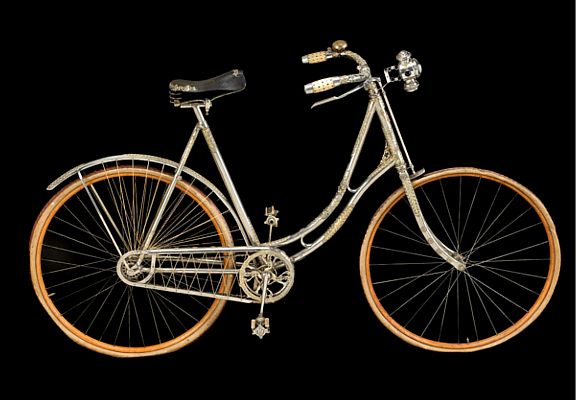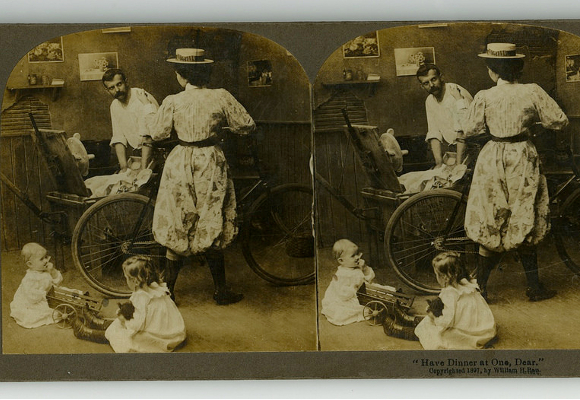Smithsonian Rolls Out Bicycle History for Bike-to-Work Day
Bicycle Innovation Is a Key Theme of “Object Project” Opening July 1.

Americans first became fascinated with the bicycle at the Centennial Exhibition in Philadelphia in 1876. National Bike-to-Work Day on May 15 provides an opportunity for the National Museum of American History to showcase why pedal power still holds strong in a motorized world. The museum’s new learning space, “The Patrick F. Taylor Foundation Object Project,” will use bicycle innovation to explore how people, things and social change shaped everyday life.
“Object Project,” opening July 1, equates the bicycle with liberation at the turn of the 20th century. Americans took to the wheel between the 1880s and 1910s, sparking a national bicycle craze in an era before automobiles. The introduction of chain-drive safety bikes in the late 1880s, which lowered the rider’s center of gravity from the earlier “high-wheel” machines, followed by air-filled tires and coaster brakes in the 1890s, made bicycles easier and more accessible to ride.

Within “Object Project’s” 4,000-square-foot learning space, visitors can interact with America’s bicycle culture in a variety of ways, including viewing historically significant objects, climbing onto a replica large-front-wheel bicycle known as an “ordinary” and flipping through digital scrapbooks. Objects on view will include bicycle lanterns, racing medals, illustrated sheet music, tintypes from the 1890s showing cyclists posing with their bicycles and a Tiffany & Co. customized bicycle from 1896 with the bejeweled monogram of its owner, Mrs. M.N. Wiley of Montgomery, Ala.

Illustrations on late-19th-century sheet music will introduce the themes of women’s mobility and freedom that grew out of bicycling. The project will also feature an actor in character as a 1890s-era “Wheelwoman,” who will interact with visitors, telling them about Washington, D.C.’s bicycle culture in the 1890s and showing the different bike maps that existed at the time.
